A union of elegance and utility, the travelling chamber candlestick carried by explorers, military officers and European royalty from the late 17th to the early 20th centuries became a classic piece of campaign and travel design. This clever, portable contraption, remained little changed for over 200 years…
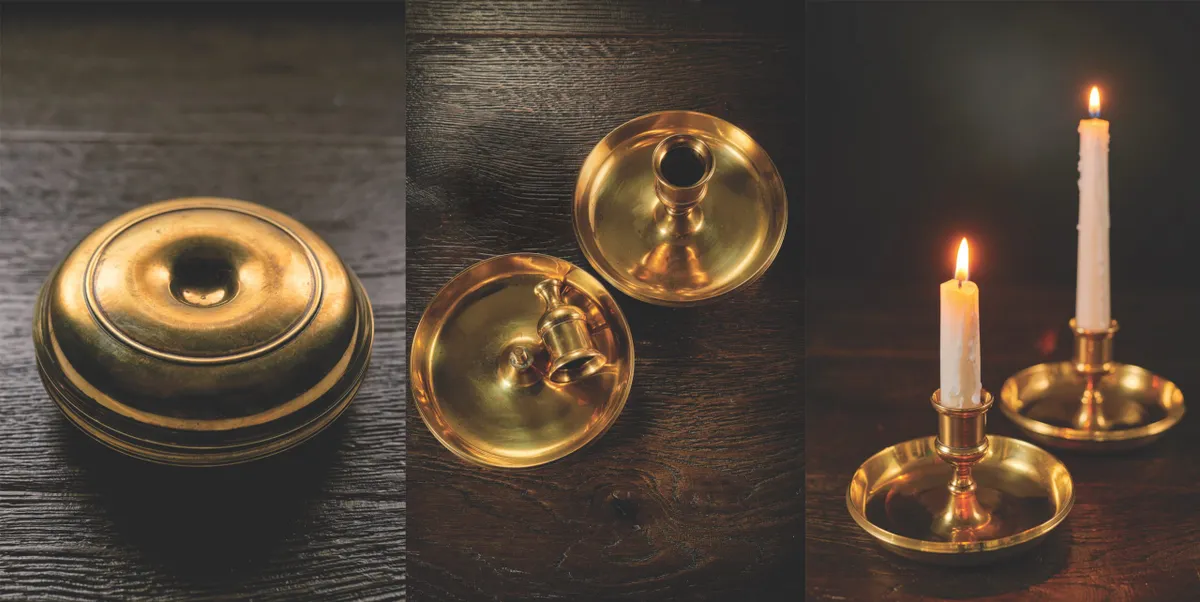
During the period of great travel and exploration (from the late 17th to the early 20th centuries) an essential required for trips abroad was the folding chamber candlestick. Compact and portable, it took up little room in a trunk and resembled a small cake, hence the name it came to be known by – the Brighton bun.
The version used at home was designed with a circular dish and handle, so you could see yourself to your chamber without dripping wax everywhere. The travelling version was similar, but the candle cup screwed onto the drip-pan base so that it could be taken apart. There was no loop handle.This so-called Brighton bun made two candlesticks, formed from two drip-pan bases that fastened together, with the two candle cups stored between the bases. They were mostly made in cast brass but also bronze, copper, wood, silver and, later, in pressed metals.
It’s believed they originated in Italy in the 17th century, but the earliest known pair are German, made by Johannes Holtzapfel around 1735.
European royalty were the first to use them as they travelled from one part of their kingdom to another. These would have been made in silver and were expensive.
Several pairs, engraved with the monogram of Queen Charlotte, wife of George III, have been sold at auction, some dating to 1775. The most recent, bearing hallmarks for 1808, sold at Sotheby’s London last July for £5,250.
From the Empire to the American Civil War
The folding candlestick became a travel essential during the height of British imperialism. They were used by General James Wolfe, who commanded the British army at the capture of Quebec from the French in 1759, and by the British-Canadian fur trader, surveyor and cartographer David Thompson, who traversed the Canadian frontier in the early 1800s.
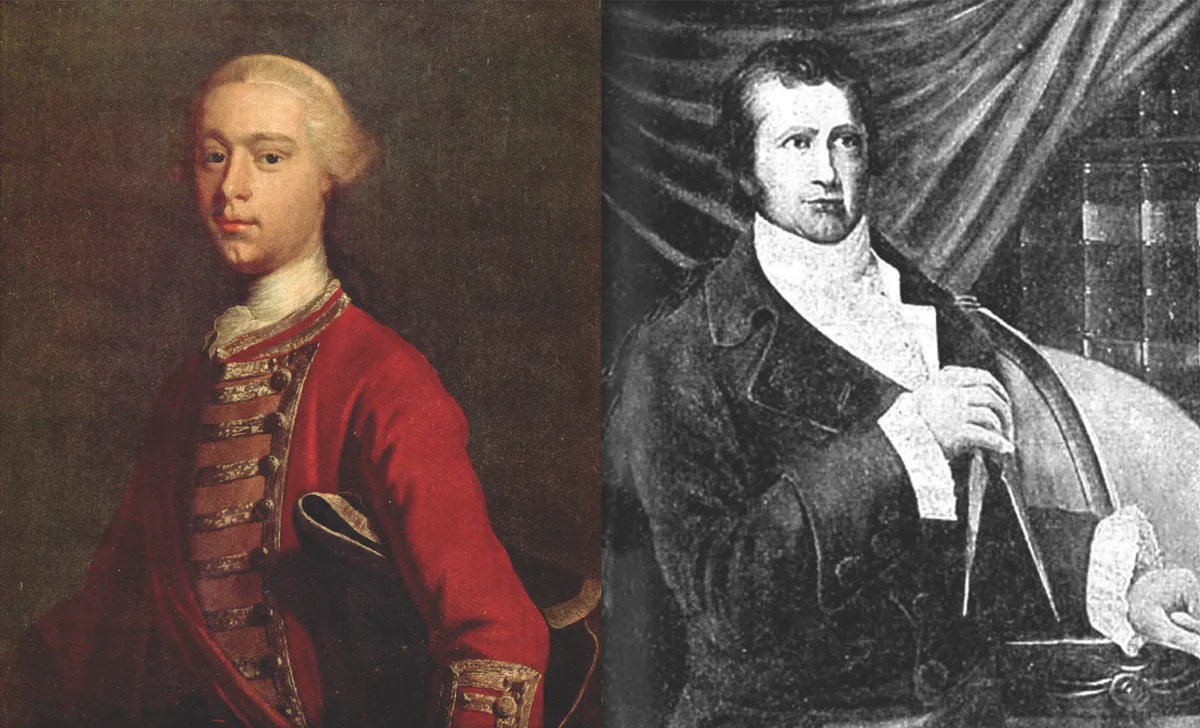
As well as England and Germany, they were also made in Austria and the US – proving popular during the Civil War to the late 19th century, when turned wood versions were sold to pilgrims visiting the Holy Land as souvenirs. Brighton buns were still being advertised for military use by the Army & Navy Stores as late as 1925. Not long afterwards, however, they fell out of use – presumably when electricity and torches superseded them. ‘In the military catalogues of the 1870s-1900s, they were not referred to as Brighton buns, but portable candlesticks,’ says Sean Clarke of Christopher Clarke Antiques. ‘It must have been a term that was coined at some stage because they look like a bun and it’s stuck.’
Explore the fascinating realm of Colonial campaign furniture and discover how to introduce handcrafted antiques into your home.
The evolution of Brighton buns
1808 – This pair of silver candlesticks by Samuel Whitford, engraved with Queen Charlotte’s monogram, sold at Sotheby’s for £5,250.
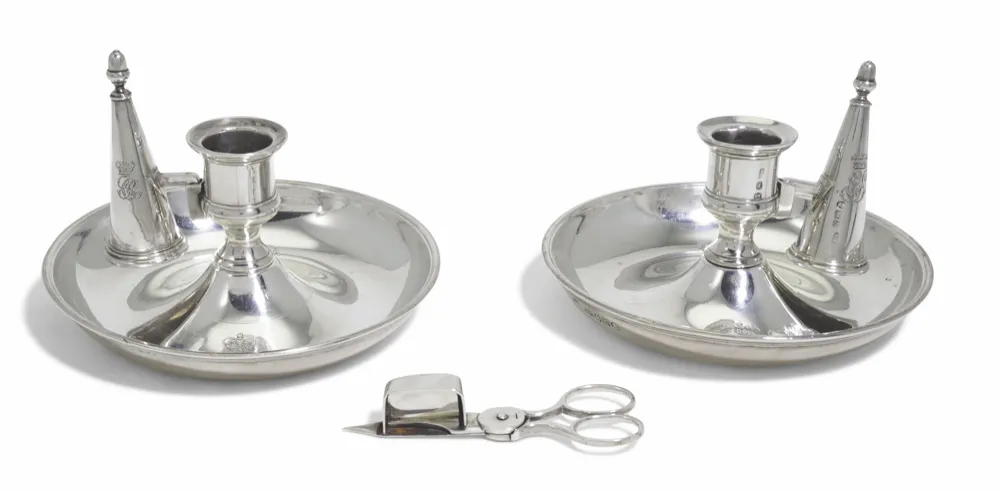
Late 1800s –In the mid-to-late 19th century, versions made of wood emerged. These are Sorrento ware from Italy, decorated with two dancing ladies.
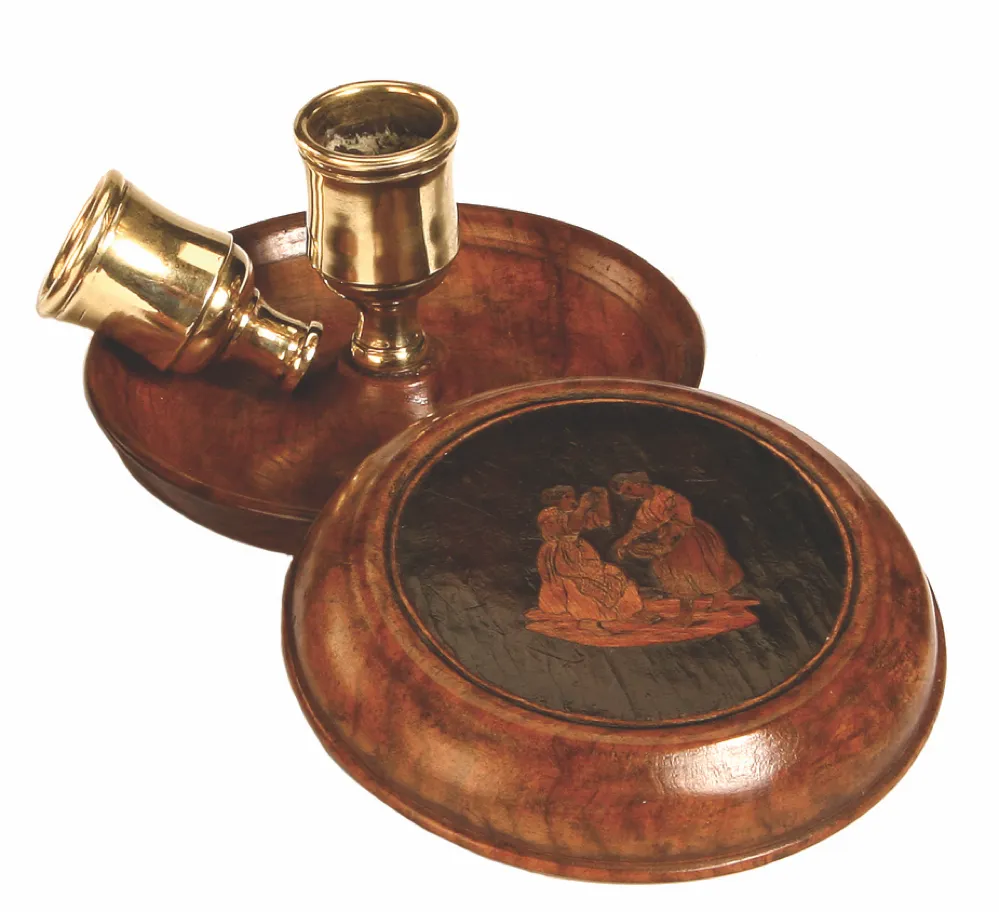
1900 –Olivewood holders, c1900, were made as souvenirs, some with ‘Jerusalem’ inscribed on them. Unusually, this pair featured handles.

Early 1900 –Later versions were made of pressed brass, which was cheaper and also lighter to carry. This example dates to the early 20th century.

What to look for when buying Brighton buns
‘Most Brighton buns on the market tend to date to the 19th century and are English or Anglo-Indian,’ says Sean Clarke of Christopher Clarke Antiques. ‘You can find some from the American Civil War. The vast majority are English in cast brass.’
Silver examples are the most expensive and are also the easiest to identify and date due to their hallmarks, but these are rarer. Most other Brighton buns do not have maker’s marks but you can date them from the materials used. Pressed brass, for instance, is from the late 19th century at the earliest, when processes changed, while those in wood were mostly made as souvenirs in Victorian times.
‘Prices can vary widely depending on the age and material used,’ describes Sean. ‘For a good cast brass pair, depending on the width of the diameter, the price can be around £350-£700, while 18th-century silver examples can sell for £11,000 to £12,000.’
Value can also be affected by how unusual the piece is. Sean advises people to do some research before buying a Brighton bun as you can track down olivewood examples on eBay, but it’s hard to find really good-quality examples.
‘Check they are complete and matching,’ he adds. ‘Sometimes parts get separated and other bits are added. Make sure the elements are all original to each other. Some people will try to pass them off as original, but they may not screw together properly. Also, make sure it hasn’t been dropped, as the rim can be knocked out of shape.’
How to style your home with campaign pieces of furniture and accessories
1
Folding colonial campaign chair by J Herbert McNair, £2,400, Manfred Schotten Antiques.

2
Small pocket telescope, £125, Christopher Clarke Antiques.

3
Leather dome-topped trunk, £5,500, Bentleys.

4
Campaign card table, £650, Lorfords

5
Brass compass with folding cover, £95, Christopher Clarke Antiques.
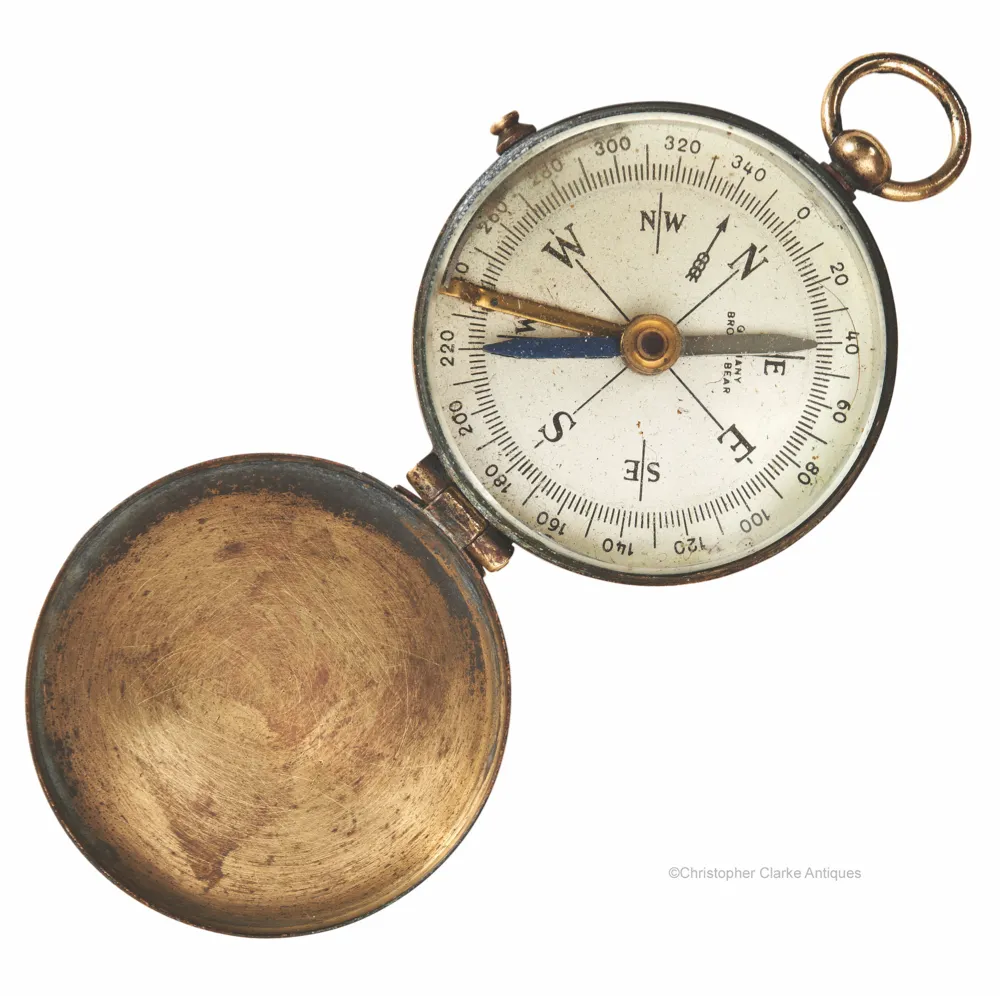
6
19th-century English mahogany campaign chest, £1,800, Brownrigg.
